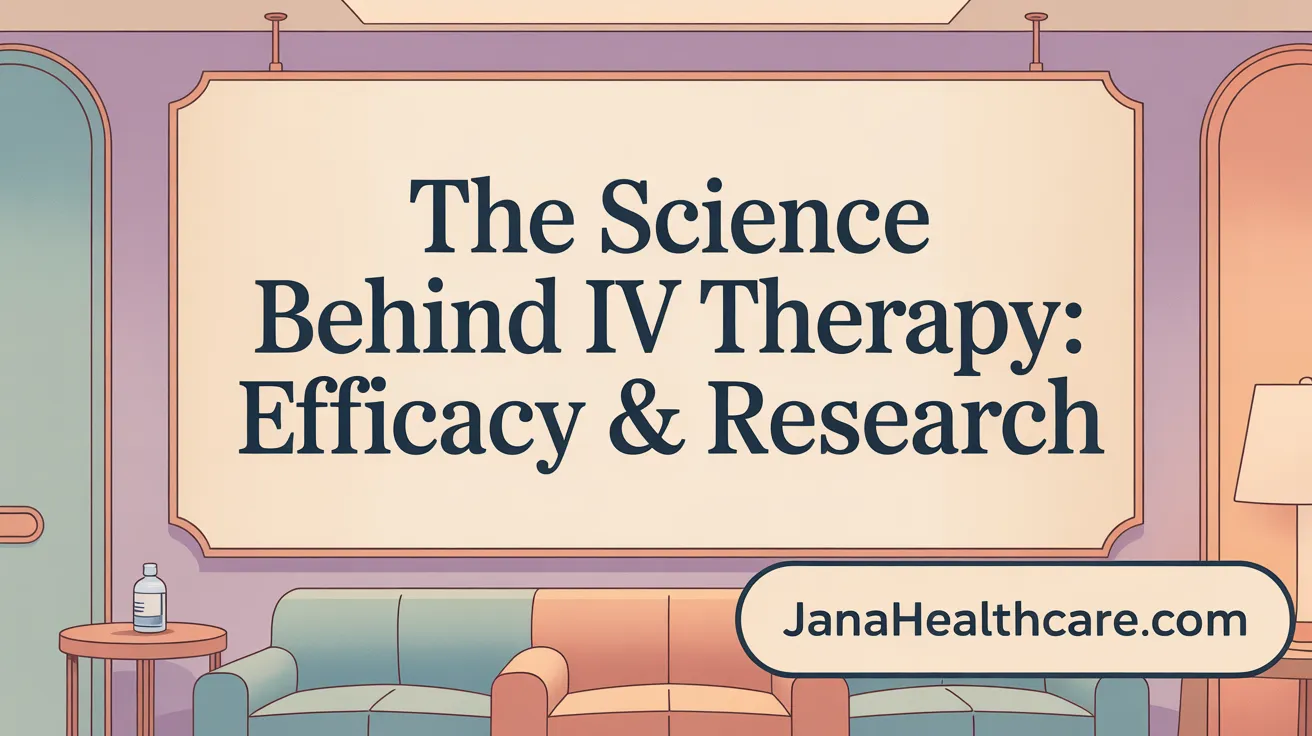Why IV Therapy Captivates the Wellness World
Intravenous (IV) therapy has surged in popularity both in clinical settings and wellness circles, touted as a powerful means to deliver nutrients and hydration directly into the bloodstream. This growing trend has sparked widespread interest and curiosity, but also questions about its efficacy, safety, and appropriate uses. This article explores what IV therapy entails, the science behind it, the benefits and risks, and why it is becoming a buzzword in health and wellness today.
What Is IV Therapy? Physiology and Procedure

What is IV therapy, and what is its physiological basis and general procedure?
IV therapy, or intravenous therapy, involves delivering fluids, medications, nutrients, or blood products directly into a person's vein. This method provides rapid absorption because once infused, these substances enter the bloodstream immediately, bypassing the digestive system. This ensures quick physiological effects, such as rehydration, electrolyte correction, or medication distribution.
The core idea behind IV therapy is to maintain or restore fluid balance, replenish electrolytes, deliver medications efficiently, or provide essential nutrients when patients cannot consume them orally due to illness or surgery. It plays a crucial role in emergency medicine, chronic disease management, and supportive care.
During the procedure, a healthcare professional inserts a small, sterile tube called a cannula into a suitable vein, usually in the arm or hand. This insertion must be done carefully to avoid damaging blood vessels and to reduce discomfort. Once the cannula is in place, it is secured, and the infusion begins, either through an infusion pump for precise control or by gravity.
The types of fluids used vary depending on treatment goals. Isotonic solutions like normal saline help refresh hydration, hypertonic solutions such as D5NS are used to manage low blood sodium, and hypotonic fluids like 0.45% saline treat cellular dehydration.
Monitoring during IV therapy is vital to prevent complications such as infiltration (leakage of fluid into surrounding tissues) or infection. Observations include checking the infusion site for swelling, redness, warmth, or pain, and ensuring the infusion rate remains appropriate. Overall, IV therapy is a safe, versatile method that, when properly administered, provides immediate and effective treatment support.
Medical and Wellness Benefits: Fact and Fiction

What are the medical and health benefits of IV therapy?
IV therapy is primarily used in medical settings to deliver rapid hydration, essential nutrients, and medications directly into the bloodstream. It is particularly effective for correcting dehydration, replenishing electrolytes, and treating nutritional deficiencies in patients unable to eat or absorb nutrients effectively. This method supports immune function, speeds up recovery after surgery or illness, and provides a quick boost of energy when needed.
In clinical practice, IV therapy has shown promise for certain chronic conditions such as fibromyalgia, where small studies suggest it may help reduce symptoms, and in cancer care to alleviate fatigue and improve well-being, though these benefits are not yet conclusively proven by large-scale scientific research.
How does IV therapy support hydration and nutrient absorption?
Because IV therapy bypasses the gastrointestinal (GI) tract, it offers nearly 100% bioavailability of nutrients, ensuring that vitamins and minerals are quickly available to the body's tissues. This is especially beneficial for individuals with GI disorders, post-surgical malabsorption, or severe dehydration. It can deliver high doses of vitamin C, B vitamins, magnesium, and amino acids directly into the bloodstream, leading to faster and more efficient supplementation than oral intake.
Can IV therapy enhance immune support and energy levels?
Many practitioners claim that IV therapy boosts the immune system by increasing antioxidant levels and supporting white blood cell production. Infusions rich in vitamin C, glutathione, and other antioxidants are popular for this purpose. Likewise, athletes and active individuals use IV therapy to replenish nutrients lost during intense exercise, often reporting increased energy and improved performance. However, while these effects can be beneficial, evidence supporting routine wellness claims in healthy individuals remains limited.
What about anecdotal wellness claims versus scientific evidence?
Many wellness centers promote IV therapy for detoxification, anti-aging, skin health, and stress relief. These claims are largely anecdotal, and current scientific evidence does not robustly support its benefits for healthy individuals without deficiencies. Most benefits are associated with hydration and correcting deficiencies rather than detoxifying or reversing aging. The body naturally eliminates excess vitamins and minerals, so the supposed advantages of “high-dose” infusions lack conclusive validation.
When is IV therapy most appropriate and when should caution be exercised?
While IV therapy is highly effective and safe when administered by trained healthcare professionals for specific medical conditions—such as severe dehydration or nutrient deficiencies—it is not a universal wellness cure. Routine use in healthy individuals or for unproven claims can lead to unnecessary costs, potential side effects like vein irritation, infections, or nutrient overload, and may divert attention from proven health practices like balanced diet, physical activity, adequate sleep, and social engagement. Always consult healthcare providers before considering IV therapy, especially if you have existing health issues such as kidney or heart problems.
For more detailed information, search queries like "medical benefits of IV therapy and wellness claims" can provide recent professional insights and updates in clinical research.
Common IV Therapy Types and Their Applications
 Intravenous (IV) therapy encompasses various methods of delivering fluids, vitamins, minerals, medications, and nutrients directly into the bloodstream to achieve rapid absorption and targeted effects (Intravenous therapy overview).
Intravenous (IV) therapy encompasses various methods of delivering fluids, vitamins, minerals, medications, and nutrients directly into the bloodstream to achieve rapid absorption and targeted effects (Intravenous therapy overview).
One of the most common applications is hydration therapy, which uses crystalloids such as normal saline or lactated Ringer's solution to quickly replenish fluids and electrolytes lost through dehydration from illness, heat, or intense activity (IV fluids overview).
Vitamin and mineral infusions are also prevalent, with formulations like the Myers' cocktail being popular. This mixture typically includes magnesium, calcium, vitamin B6, B12, B5, B complex vitamins, and vitamin C, aiming to boost energy, immune function, and overall wellness (IV Vitamin Therapy overview).
Beyond hydration and nutrient cocktails, IV therapy serves for medication delivery—such as IV magnesium sulfate for asthma exacerbations, or antibiotics and chemotherapy drugs—especially when rapid absorption or bypassing the gastrointestinal tract is desired (IV therapy uses).
Nutritional support via parenteral nutrition provides essential calories, amino acids, lipids, and vitamins for patients unable to eat or absorb nutrients through digestion, often administered through central lines (Intravenous therapy).
In clinical settings, these therapies are meticulously administered by trained healthcare providers to ensure proper technique, formulation, and patient safety. Wellness clinics, however, may offer more customized infusions targeted at enhancing energy, skin health, or detoxification. Despite their popularity, these non-medical treatments often lack rigorous scientific validation and regulation (IV vitamin therapy overview).
The process involves inserting a catheter into a peripheral or central vein, connected to infusion pumps or gravity drip systems, with formulations tailored to individual health goals and medical needs (IV therapy procedure steps).
Safety protocols include sterile insertion, monitoring for complications such as infiltration, infection, or vein damage, and adjusting flow rates as necessary. Proper oversight minimizes risks like allergic reactions or vein irritation, making professional administration crucial for safe and effective IV therapy (Assessing an IV site and monitoring IV complications).
Scientific Evidence and Research on IV Therapy Efficacy

What scientific evidence and clinical research exist regarding the efficacy of IV therapy?
IV fluids and nutrient delivery through IV therapy are well-established for medical purposes such as rehydration in dehydration cases, correction of nutrient deficiencies, and managing certain chronic illnesses. These applications are supported by a substantial body of clinical research, indicating that IV therapy is effective when used appropriately within medical contexts (IV therapy overview, IV fluids overview).
However, when it comes to wellness uses—such as boosting immunity, enhancing energy, or detoxifying—the scientific evidence is notably lacking. Most claims related to these benefits are anecdotal or based on small, poorly designed studies. For example, research on high-dose IV vitamin C in cancer patients has produced mixed results, with some small studies suggesting potential improvements in quality of life, but no definitive proof or FDA approval for these purposes (IV vitamin C and cancer patient quality of life, IV vitamin therapy benefits and risks).
Significant gaps remain in the scientific understanding of IV therapy’s broader benefits for healthy individuals. Current research often does not include large sample sizes, placebo controls, or long-term safety assessments (Scientific evidence for IV therapy, IV vitamin therapy overview). Consequently, the supposed effectiveness of IV therapy for general wellness and preventive health remains uncertain.
To advance understanding, future research must focus on rigorous, high-quality clinical trials that compare IV therapy with oral alternatives, explore long-term safety, and account for placebo effects (IV vitamin therapy and clinical research, Future IV vitamin therapy research). Addressing these gaps will clarify whether the widespread wellness claims are supported by solid scientific data or are largely driven by marketing and anecdotal experiences (IV vitamin therapy overview and risks).
Risks, Side Effects, and Safety Considerations
IV therapy, while widely used for hydration and nutrient delivery, carries certain risks and potential side effects that must be carefully managed. Common complications include infection at the insertion site, which can occur if strict sterile techniques are not followed (Local Complications of Peripheral IV Therapy). Inflammation of the vein’s inner lining, known as phlebitis, often manifests as redness, swelling, heat, and pain, and can sometimes lead to the formation of blood clots.
Other issues include infiltration, where fluids leak into surrounding tissues causing swelling, discomfort, and tissue damage, and extravasation, which involves the leakage of irritating or vesicant medications into tissues, potentially resulting in burns or necrosis (Infusion therapy side effects).
Allergic reactions are another concern, ranging from mild skin irritation to severe anaphylaxis, especially if the patient is sensitive to components of the infusion (Side Effects of Infusion Therapy). Additionally, high doses of certain nutrients, like vitamin C or fat-soluble vitamins, can lead to toxicity—kidney stones or electrolyte imbalances—particularly in vulnerable individuals (IV vitamin therapy safety concerns).
The procedure's safety heavily depends on maintaining sterility, proper site selection, and monitoring during infusion (Intravenous (IV) therapy purpose). Trained healthcare professionals are best equipped to prevent complications, promptly identify issues, and intervene appropriately. Patients with existing health conditions, such as kidney or heart disease, require special caution because they are more susceptible to fluid overload, electrolyte disturbances, and cardiovascular stress (IV therapy safety concerns).
In summary, while IV therapy is generally safe when administered correctly, awareness of associated risks and diligent oversight are essential to ensure patient safety and to minimize adverse effects.
The Growing Popularity of IV Therapy in Wellness and Healthcare
 IV therapy has gained significant traction in both medical and wellness communities, driven by its promise of delivering nutrients directly into the bloodstream for rapid effects. Many individuals are turning to this method to quickly address dehydration, boost energy, strengthen immunity, or improve skin health. Its appeal lies in its ability to bypass the digestive system, ensuring almost 100% bioavailability of vitamins and minerals, which is especially attractive to those with absorption issues or chronic illnesses (IV vitamin therapy benefits, IV therapy for nutrient absorption).
IV therapy has gained significant traction in both medical and wellness communities, driven by its promise of delivering nutrients directly into the bloodstream for rapid effects. Many individuals are turning to this method to quickly address dehydration, boost energy, strengthen immunity, or improve skin health. Its appeal lies in its ability to bypass the digestive system, ensuring almost 100% bioavailability of vitamins and minerals, which is especially attractive to those with absorption issues or chronic illnesses (IV vitamin therapy benefits, IV therapy for nutrient absorption).
Celebrity endorsements and social media hype have played a considerable role in fueling the trend. High-profile figures often showcase their experiences with IV treatments, creating a perception that the therapy is a quick fix for various health and beauty concerns (Celebrities and IV vitamin therapy trend, Celebrity endorsements of IV therapy). This visibility encourages consumers to seek similar rapid solutions for fatigue, stress, or hangovers (IV therapy for hangover recovery).
The customizable aspect of IV therapy further attracts people. Clinics offer tailored infusions including ingredients like magnesium, B vitamins, vitamin C, and antioxidants like glutathione, aiming to meet specific wellness goals such as athletic performance, skin rejuvenation, or immune support (Myers' cocktail composition, customizable IV vitamin treatment, IV hydration for nutrient delivery). The short duration of treatments, typically 30 to 60 minutes, and the immediate sensation of revitalization make it an appealing option for busy lifestyles (IV therapy session duration, IV therapy process).
However, the surge in popularity raises safety and regulatory questions. While IV therapy is effective for treating deficiencies in clinical settings, its use as a wellness service outside hospitals is often unregulated (IV vitamin therapy safety concerns, IV therapy safety). Many claims about its benefits lack rigorous scientific backing, and risks such as infection, vein damage, or vitamin toxicity cannot be overlooked (Potential risks of IV vitamin therapy, Risks of IV vitamin therapy). Experts recommend consulting healthcare professionals before pursuing these treatments and emphasize that current evidence remains limited, highlighting the importance of safety and evidence-based practice in this growing trend (Consulting healthcare professionals about IV therapy, Professional advice on IV therapy).
Historical Development and Future Directions
Origins and evolution of IV therapy
IV therapy’s roots trace back to the 1400s, with early uses involving blood transfusions and infusions. Over centuries, technological innovations like sterile techniques, the invention of hypodermic needles, and infusion pumps transformed its medical capabilities. In the 20th century, the development of total parenteral nutrition further expanded clinical applications, allowing patients to receive nutrients directly into their bloodstream.
Technological advances
Modern IV therapy benefits from advanced tools such as vein visualization devices, which improve accuracy, and smart infusion systems that optimize safety and dosage precision. These innovations reduce risks and enhance patient care, especially in complex or long-term infusions (Infusion therapy benefits, IV infusion therapy benefits).
Differences between medical and wellness IV use
Medically supervised IV therapy adheres to strict scientific standards, targeting specific conditions like dehydration, nutrient deficiencies, or cancer support. These treatments are personalized, administered by licensed healthcare providers, and backed by research (IV therapy overview, Medical uses of IV vitamin therapy).
Wellness IV infusions, however, are often elective and marketed for general health benefits, such as boosting energy or skin health. These are typically provided outside clinical settings with less oversight, and their effectiveness remains scientifically unproven (IV vitamin therapy overview, IV therapy uses and safety).
Cost and accessibility factors
Cost factors significantly influence access to IV therapy. Medical treatments can be expensive but are usually covered by insurance when prescribed for specific health issues. Conversely, wellness IVs often cost between $100 and $800 per session, paid out of pocket, limiting access due to high expenses (Cost of IV vitamin therapy sessions, IV therapy costs and insurance).
Geographical location, regulatory environment, and availability of trained professionals also impact accessibility. Clinics in urban areas or those offering home services may increase reach, but safety and quality standards vary (Home IV treatment).
Future research and technological prospects
Looking ahead, IV therapy is poised for growth through the integration of AI-driven monitoring, portable home-use devices, and personalized nutrient formulations based on biomarker analysis. These advancements aim to improve safety, efficacy, and convenience (Future IV vitamin therapy research, IV therapy innovations and research).
Ongoing clinical research seeks to validate the benefits of broader applications, refine dosing protocols, and develop new indications for chronic disease management, anti-aging, and personalized medicine. Regulatory updates are expected to ensure safety and transparency, fostering trust and wider acceptance of both medical and wellness practices (Safety of IV therapy, IV therapy regulatory considerations).
The Reality Behind the IV Therapy Buzz
IV therapy stands at the intersection of rigorous medical treatment and trendy wellness practices. While its clinical uses for hydration, nutrient deficiency correction, and medication delivery are well-established and indispensable, the rise of non-medical IV therapies demands cautious evaluation. Scientific evidence supporting generalized wellness benefits remains limited, with potential risks and costs necessitating careful consideration. For those interested, consulting qualified healthcare professionals and prioritizing evidence-based approaches remains essential. As technology and research evolve, IV therapy may unlock new, validated roles in health optimization, but for now, understanding its real capabilities and limitations helps consumers navigate this popular but complex trend.
